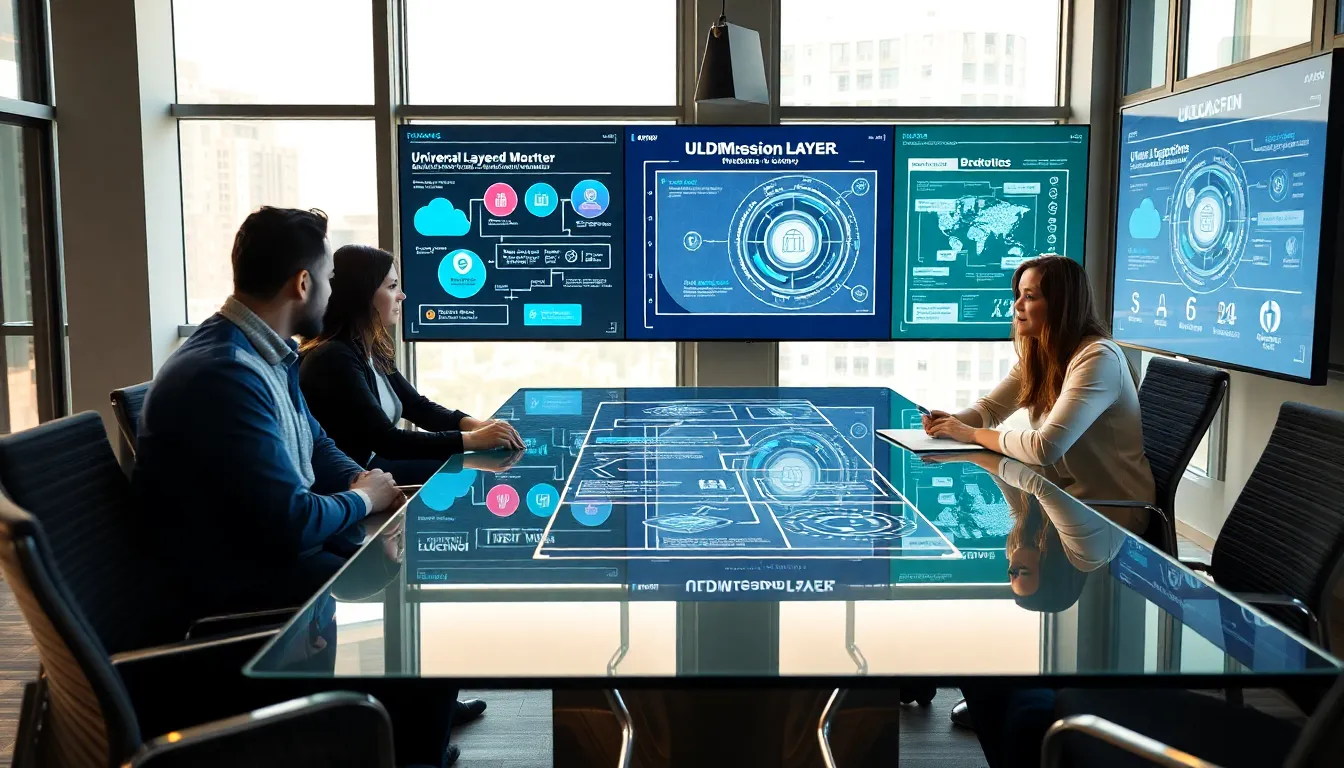Imagine a world where blockchain technology isn’t just a buzzword but a transformative force, revolutionizing how we interact with data. Enter ULDM, the unsung hero ready to redefine our digital landscape, especially in its dance with Bitclassic. Curious? Let’s unpack this intriguing marriage of technology in a way that’s as easy to digest as your morning coffee, but just as stimulating.
Table of Contents
ToggleWhat Is ULDM?

ULDM, or Universal Layered Distributed Model, serves as a framework designed to enhance decentralization across various applications. It pushes the envelope on traditional models by introducing a layered approach that enhances the flexibility and scalability of blockchain technologies. This model utilizes a variety of protocols and consensus mechanisms to ensure that data transactions are not only secure but also efficient. In simpler terms, ULDM is like the Swiss Army knife of digital solutions, flexible enough to cater to different needs while maintaining robust performance.
Key Features of ULDM
ULDM boasts several features that set it apart:
- Layered Architecture: This design allows for more efficient processing of transactions by distributing the workload across multiple layers.
- Interoperability: ULDM ensures different blockchain systems can communicate effectively, breaking down silos that often hinder collaboration.
- Scalability: The ability to easily add more layers as demand grows makes additional capacity straightforward.
- Robust Security: Built-in consensus mechanisms offer multiple layers of authentication, so the chances of a security breach are minimal.
Thanks to these features, ULDM stands at the forefront of blockchain innovations.
Understanding Bitclassic
Bitclassic is a unique form of blockchain that operates on principles derived from classic cryptocurrencies but with vital adaptations. It incorporates the best features of established models while prioritizing ease of use and accessibility. Rather than being just another tech fad, Bitclassic makes cryptocurrency functionality relatable and straightforward, appealing to both seasoned developers and newcomers.
It aims to create community-based applications that are easier to deploy while still adhering to high-security standards. Essentially, it’s bridging the gap between complex technology and user experience.
The Relationship Between ULDM and Bitclassic
The synergy between ULDM and Bitclassic is fascinating. ULDM provides the foundational framework that Bitclassic leverages to enhance its capabilities. By employing ULDM’s layered architecture, Bitclassic can process transactions efficiently and maintain high security standards.
This relationship creates a robust environment for developing decentralized applications. Bitclassic benefits from the scalability and versatility of ULDM, while ULDM gains from being linked to a user-friendly application that demonstrates its potential. Together, they create a strong ecosystem that fosters innovation and user engagement.
Use Cases for ULDM and Bitclassic
The practical applications of ULDM and Bitclassic are vast:
- Financial Services: Creating robust, decentralized finance solutions that are both secure and user-friendly.
- Supply Chain Management: Enhancing transparency and traceability in logistics.
- Decentralized Applications (DApps): Allowing developers to create applications that run autonomously without a central server.
These examples only scratch the surface. The combination of ULDM and Bitclassic opens doors to numerous future applications in various industries, eventually reshaping digital interactions.
Challenges and Limitations of ULDM in Bitclassic
While the collaboration between ULDM and Bitclassic is exciting, it’s not without hurdles. Some challenges include:
- Complex Integration: Merging existing systems with ULDM can be complicated, often requiring significant development efforts.
- User Adoption: Users accustomed to traditional models may resist transition to decentralized solutions, so slowing adaptation.
- Regulation: As with many blockchain technologies, navigating the regulatory environment can be tricky.
These limitations could impact the long-term success of implementing ULDM within Bitclassic, making it crucial for stakeholders to address them.
Future Prospects of ULDM and Bitclassic
Looking ahead, the prospects for ULDM and Bitclassic seem promising. As more industries recognize the benefits of decentralization, adoption is likely to increase. The synergy between the two could lead to innovations in various fields, from finance to IoT.
Improvements in technology and infrastructure will likely resolve existing challenges. Besides, as educational resources grow, more developers will feel empowered to fully use these systems, paving the way for groundbreaking applications.





